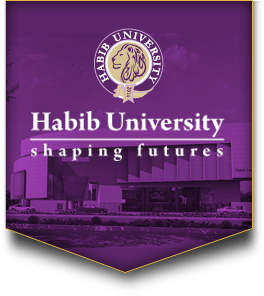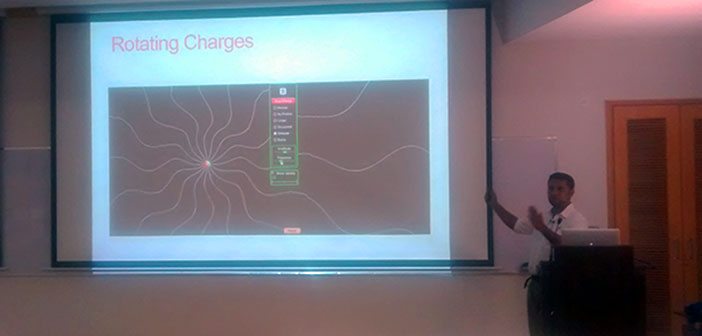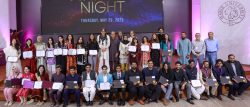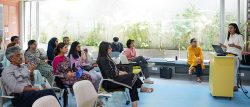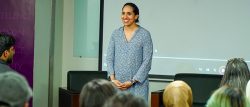Guest scholar explains gravitational waves and the significance of the LIGO discovery in February, at a public lecture hosted by Habib University’s School of Science & Engineering
HABIB UNIVERSITY, March 15: Scientists and young scholars from the city of Karachi, along with Habib University students and faculty, thronged the Tariq Rafi Lecture Theater here on Tuesday evening to hear Dr. Babar Qureshi speak about gravitational waves. Even though the talk had to be rescheduled from a day before, scholars from both humanities and sciences backgrounds turned up in large numbers to attend the lecture, titled ‘Gravitational Waves: A Spacetime Symphony’.
An Assistant Professor at LUMS, Dr. Babar Qureshi is a theoretical physicist who works on a broad range of theoretical ideas, ranging from the very basic – quantum gravity, non-commutative geometry, string theory, non-perturbative aspects of quantum field theory – to more applied ones, including quantum computation using quantum Hall systems and properties of exotic materials such as topological insulators. He has spent extended periods as a visiting scientist at the Perimeter Institute, Kavli Institute for Theoretical Physics, CERN and UNAM.
With the memory of February 11, 2016 still fresh in everyone’s minds – the day the Laser Interferometer Gravitational-Wave Observatory (LIGO) project announced it had observed gravitational waves, about a 100 years after the theory of General Relativity, which predicted their existence, was presented – the audience listened attentively as the young professor explained, in a lay person’s language, the relationship between space and time and how gravitational waves are created.
To be sure that the audience was following, Dr. Qureshi made sure to pause at various moments in his lecture and open the floor to questions. The talk therefore was a deeply interactive session, with Dr. Qureshi patiently guiding those listening through the ideas and ramifications of the theories he was discussing.
Dr. Qureshi started by breaking down Descartes and Einstein’s theories about space, then used Newton’s Law of Inertia to explain the relationship between space and time and extrapolated it to the whole of space. He explained how Einstein imagined empty space and time (which he named spacetime) as a dynamic entity, much like a piece of foam, which can be bent, curved and stretched – and that gravity is just an effect of a curvature in this cosmic ‘foam’.
He explained what it means to ‘curve spacetime’, how it is related to gravity, what exactly gravitational waves are and how they are detected. He said that, essentially, different points in the spacetime fabric become ‘pinched’ due to the presence of a large mass, which distorts the spacetime fabric around it. Things that are close to such large masses follow curved paths due to the bending of the spacetime fabric itself. If one were to visualize this, spacetime would be a large piece of soft foam, with different celestial bodies represented by heavy marbles of various sizes. The depressions created by in the foam by placing these heavy marbles on it would give us a fair idea of how spacetime ‘curves’ around celestial bodies.
Towards the end, Dr. Qureshi talked about how the LIGO observatory was able to observe gravitational waves using an interferometer and confirm Einstein’s theory. He explained the functioning of the interferometer itself and the ripples in spacetime it was able to detect, using simulations of black hole collisions to give the audience an idea of how the gravitational waves detected by LIGO were created and observed.
“We now know something new and exciting about our universe: it’s like we knocked on it, and felt it vibrate,” Dr. Qureshi remarked at the end of his talk, to rapturous applause.
